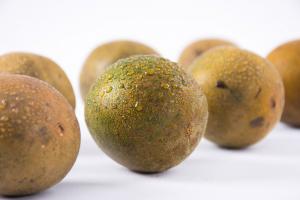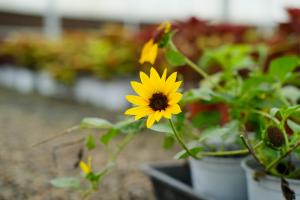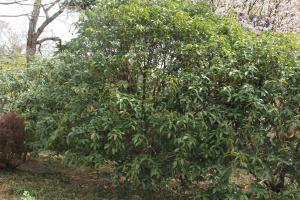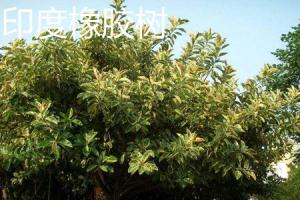Brush the bowl, sponge the bottom of the basin, and keep the flowers for 10 years without rotten roots
At ordinary times, flower friends may prepare a lot of dish washing sponges at home. If you have used the dishwashing cloth for a long time, don't throw it away. Use it to pad the bottom of the basin to ensure that the flowers will not rot for 10 years
1 wash the oil stains in the bowl sponge with detergent, dry it, and then put it on the permeable hole at the bottom of the flowerpot. If there are many bowl sponges, you can also pad the whole basin bottom with a layer
2. Pour the soil into the flowerpot padded with a bowl sponge, plant flowers, water it through, and you'll be done. You won't worry about rotten roots if you water it later
3. Because the bowl sponge has a strong ability to absorb and store water. Once there is water in the basin soil, it will soon be absorbed and will not rot; If there is water shortage, the root system can absorb water from the sponge and will not dry quickly. It can be said to kill two birds with one stone

The bottom of the basin is padded with willow branches. The root system is white and thick, far away from black rot
In autumn, some willow branches in the park began to fall. At this time, we should quickly pick them up and pad the bottom of the basin. Because there is salicylic acid in willow branches, it can not only make the roots grow fast and strong, but also prevent rotten roots
1. Cut the fallen willow branches into small sections with an axe, not too long
2. Cut the willow branches into small sections, spread a layer evenly on the bottom of the basin, and then pour them into the soil and plant flowers
3. The willow branches padded on the bottom of the basin can not only play the role of ventilation and drainage, but also release salicylic acid, nourish the root system and make the root system white and thick

The bottom of the basin is padded with towel gourd collaterals, and radish roots grow in the basin
If you can't eat towel gourd at home, don't throw away the old towel gourd, sun it into towel gourd collaterals, and raise flowers at the bottom of the basin. The big and thick roots are like turnips
1. Towel gourd can only be used after drying. Take out the seeds before use to avoid germination in the basin, and then cut them into small pieces about the length of your fingers with scissors for standby
2. Cut towel gourd and throw it directly into the basin bottom, especially cover the permeable hole. In this way, when watering, it can not only prevent soil loss, but also achieve the role of water permeability and ventilation, so that the root system can breathe freely and grow wantonly

The bottom of the basin is padded with pine balls, and 2 pots will explode in 3 years
In autumn and winter, a layer of pine balls will fall under the pine tree. These pine balls are really good materials for the bottom of the basin. They are especially suitable for flowers that are afraid of rotten roots, such as longevity, crab claw orchid, Clivia, etc
1. When you go to the mountains or play in the suburbs during the holidays, you can pick up some pine balls and take them home to bask in the sun for a few days or scald them with boiling water, which can be used for disinfection
2. Small pine cones can be directly laid on the bottom of the flowerpot as a drainage layer to filter out excess water in the soil and prevent flower roots from rotting
4. After a period of time, you will find that the flowers padded with pine cones have green and thick leaves, not to mention how prosperous they are
5. If the pine cone can't be used up for a while and a half, you can smash it, sprinkle some water and Rett it in a plastic bag. When it turns black, it will be retted. Take it out and mix it with other nutrient soil to raise flowers. It's absolutely unique

The basin bottom is padded with some wet paper towels (non-woven fabric), which will not rot for 10 years
Don't throw away the normally used wet paper towel or the non-woven fabric in the shoe box. Use it to pad the bottom of the basin. It's super easy to use. It not only doesn't leak soil, but also makes the flowers grow particularly strong
1. Whether it's wet paper towels or non-woven fabrics, it's best to wash and bubble with water to remove the impurities inside
2. After washing, spread it out on the balcony and dry it
3. Fold the dry wet paper towel or non-woven fabric a few times, or group it into a ball, throw it into the bottom of the basin, and you can plant flowers
4. Wet paper towels and non-woven fabrics are breathable and absorbent, which is conducive to the growth of flower roots, prevent rotten roots, and prevent soil leakage through permeable holes

Put some charcoal on the bottom of the basin, and the flowers will not rot and the roots will jump up
Charcoal can not only barbecue and absorb formaldehyde, but also pad the bottom of the basin. It can absorb water and sterilize, so that the root system does not rot, but also supplement potassium fertilizer to the flowers, so that the flowers grow swish fast
1. Take out part of the charcoal and burn it into ash, then mix it with part of the unburned charcoal and break it into small pieces, about the size of each nail cap, which is a little larger than the water hole of the flowerpot
2. Pour the crushed charcoal into the bottom of the flowerpot. Lay a layer of larger particles on the bottom and a layer of smaller particles on the top, with a thickness of about 5cm
3. In this way, the unburned charcoal block can absorb water, sterilize and breathe air to prevent root rot, while the unburned charcoal block can supplement potassium fertilizer to the flower and make the flower root system strong and grow fast

Peanuts, walnuts and other fruit shells pad the bottom of the basin, with oil-green leaves and huge flowers
When the weather is cold, peanuts, melons, seeds, walnuts and other nuts can be eaten. However, don't throw away the shell after eating. Smash the shell and lay it on the bottom of the basin to raise flowers, which can not only breathe and drain water to prevent rotten roots, but also the oil substances in the nuts can supplement nutrients for the flowers, so that the flower leaves are full of oil and the flowering basin is large
1. Accumulate some original peanut shells, walnut shells and melon seed shells, wash them and dry them. If they are salty, don't use them
2. Lay the dried fruit shell on the bottom of the basin, about 3-5cm thick, and then fill in the soil and plant flowers and plants. Pay attention that the roots of flowers and plants do not directly contact with the fruit shell, but separated by a layer of soil

Cinders pad the bottom of the basin, and the flowers are crazy
After the coal is fully burned, the remaining cinder particles have many gaps, absorb water and prevent rotten roots, and are rich in trace elements such as iron oxide, magnesium oxide and calcium oxide, which can supplement nutrition for the flowers. It's good to pad the bottom of the basin
1. Go to the breakfast shop selling tea eggs and small steamed buns, collect some cinders, soak them in clean water, wash them 2-3 times, wash off the coal ash, leaving only cinders the size of your finger belly
2. Filter out the cinder with a sieve and dry it. You can raise flowers at the bottom of the basin! The root system grows thick and dense, and the cinder has been burned at high temperature. There will be no insect eggs and bacteria. You can rest assured to raise flowers

The bottom of the basin is padded with egg shells, and the leaves are wide and firm
The egg shell cushions the bottom of the basin, which not only loosens and breathes air, but also protects the flowers from rotten roots. It can also supplement calcium, potassium, iron, magnesium, phosphorus and other nutrients, so that your flowers and leaves are firm and not yellow
1. Collect the remaining egg shells from cooking, wash them and dry them in the sun. Fry them in a pan for a while. After they turn a little yellow, they are crushed into small pieces
2. The crushed egg shell can be poured into the bottom of the basin. Before pouring, put a filter screen on the water hole to prevent the egg shell from being washed out when watering
3. The flowers and plants absorb the calcium, iron, magnesium, phosphorus and other nutrients in the egg shell, grow very fast, and the leaves will be very stiff and in great condition

Pine needles pad the bottom of the basin. The flowers and plants are strong and do not attract insects
Pine needles are common on green belts and hillsides. We don't think they are of any use. In fact, it is a very good flower raising artifact. It cushions the bottom of the basin. The flowers grow well, not only with dense roots
1. Collect black or brown pine needles, cut them into small pieces, and then expose them to the sun for a few days or cook them in a pot to eliminate insect eggs and bacteria
2. The boiled pine needles can be sprinkled on the bottom of the basin after drying. The thickness is about 5cm. It has good drainage and air permeability, and will let the roots breathe freely
3. After the pine needle is paved, pour it into the soil and plant flowers normally. Moreover, the volatile oil in the pine needle can play a certain role in insect repellent and antiviral, so that the flowers are not vulnerable to diseases and pests


 how many times do yo...
how many times do yo... how many planted tre...
how many planted tre... how many pine trees ...
how many pine trees ... how many pecan trees...
how many pecan trees... how many plants comp...
how many plants comp... how many plants can ...
how many plants can ... how many plants and ...
how many plants and ... how many pepper plan...
how many pepper plan...































